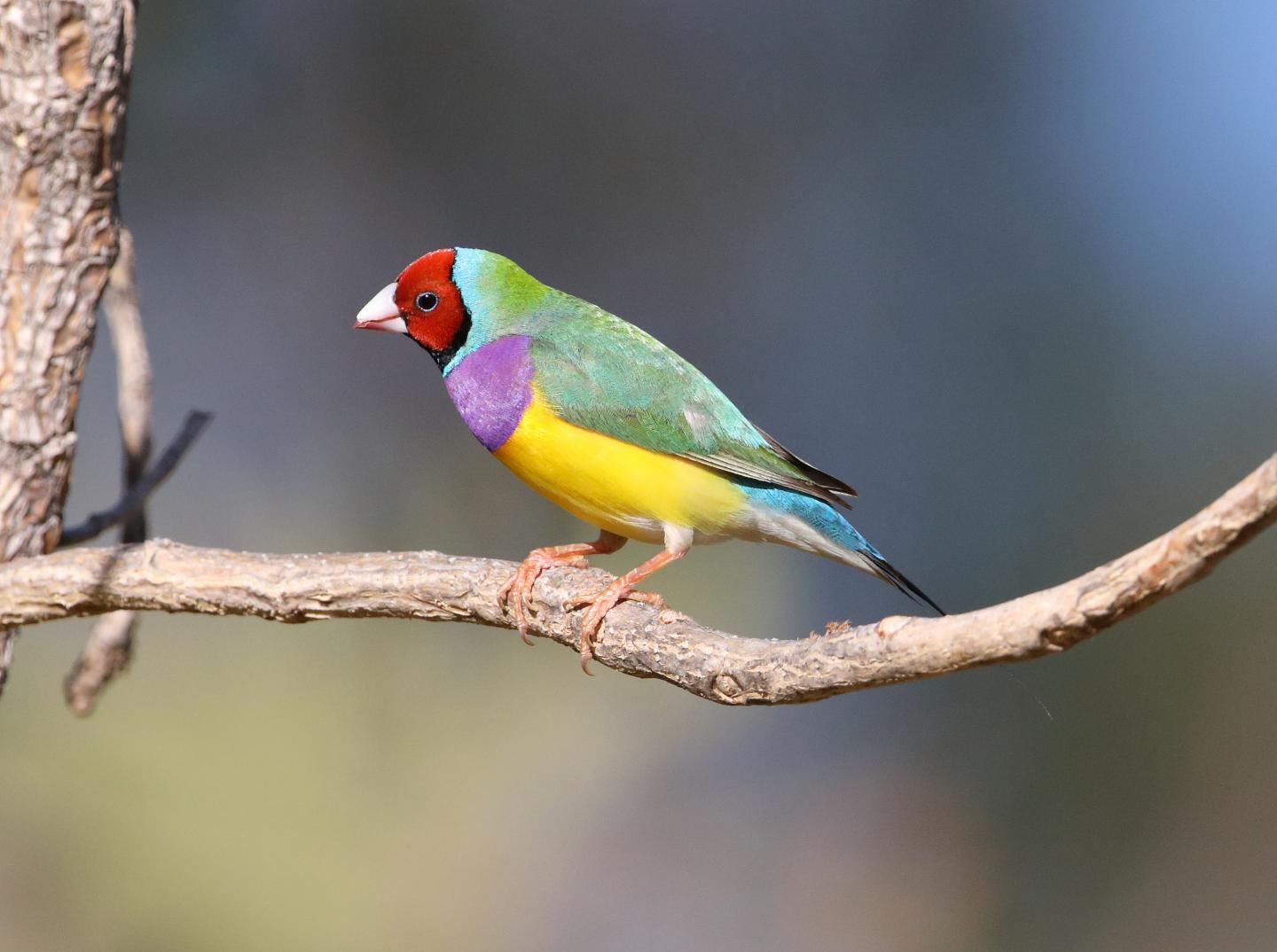An underlying selection mechanism prevents one color from dominating

Credit: Copyright Marc Gardner, 2019
Ithaca, NY–There appears to be an underlying selection mechanism at work among Gouldian Finches–a mechanism that allows this species to produce and maintain individuals with red heads, black heads, and yellow heads. Research by scientists from the the University of Sheffield in the United Kingdom, the Cornell Lab of Ornithology, and other institutions, reveals what this additional evolutionary process might be. Findings were published today in the journal Nature Communications.
“Most people have heard of natural selection,” says lead author Kang-Wook Kim at the University of Sheffield. “But ‘survival of the fittest’ cannot explain the color diversity we see in the Gouldian Finch. We demonstrate that there is another evolutionary process–balancing selection–that has maintained the black or red head color over thousands of generations.”
The yellow-headed type (actually more orange) is produced by a completely different mechanism that is not yet understood. Yellow-headed Gouldian Finches make up less than one percent of the wild population.
“Having distinct multiple color types–a polymorphism–maintained within a species for a long time is extremely rare,” explains co-author David Toews, who did this work as a postdoctoral researcher at the Cornell Lab and who is now at Pennsylvania State University. “Natural selection is typically thought of in a linear fashion–a mutation changes a trait which then confers some reproductive or survival advantage, which results in more offspring, and the trait eventually becomes the sole type in the population.”
Studies from Macquarie University in Australia have shown the red-headed finches have the apparent advantage. Female Gouldian Finches of all colors prefer the red-headed males, who also happen to be more dominant in the social hierarchy. So why hasn’t the black-headed type disappeared? It turns out there are disadvantages to having a red head, too, such as higher levels of stress hormones in competitive situations.
“If advantages are cancelled out by concurrent disadvantages, these two color types can be maintained–that’s balancing selection,” Toews says. “Red forms are not as common in the wild, so the counterbalancing pressure reduces the advantage of being red. That’s super cool!”
Teams from the University of Sheffield and the Cornell Lab independently zeroed in on a particular gene called follistatin which is found on the Gouldian Finch sex chromosome and regulates melanin to produce either red- or black-headed finches. Rather than competing, the two teams decided to join forces and share their data. For the yellow morph, a different gene, not located on the sex chromosome, is controlling the head pigmentation, but it hasn’t yet been found and it’s not clear what forces are allowing the yellow morph to persist in the wild.
In another twist, Toews and co-author Scott Taylor, at the University of Colorado-Boulder, have done previous research that revealed the genes likely governing the plumage differences between North American Blue-winged and Golden-winged Warblers–and one of those regions is in the same spot on the sex chromosome that differs among Gouldian Finches with different head colors.
“We didn’t expect we’d locate the exact genomic region that governs plumage differences in both the Gouldian Finch and the two warblers,” says Toews. “But now that we’ve done it, it opens up the possibility that the same region in other species may also be controlling plumage color.”
###
Reference:
Kang-Wook Kim, Benjamin C. Jackson, Hanyuan Zhang, David P. L. Toews, Scott A. Taylor, Emma I. Greig, Irby J. Lovette, Mengning M. Liu, Angus Davison, Simon C. Griffith, Kai Zeng, Terry Burke. (2019) Genetics and evidence for balancing selection of a sex-linked colour polymorphism in a songbird. Nature Communications. DOI: 10.1038/s41467-019-09806-6
Other institutions participating in this research are the University of Colorado at Boulder, University of Nottingham, and Macquarie University,
Media Contact
Pat Leonard
[email protected]
Related Journal Article
http://dx.




